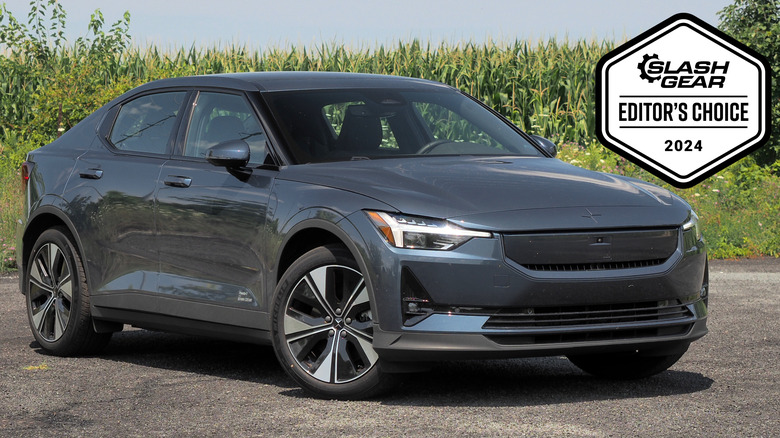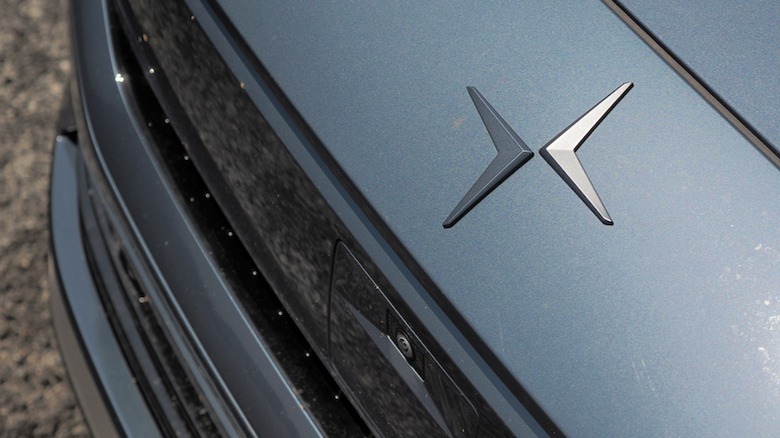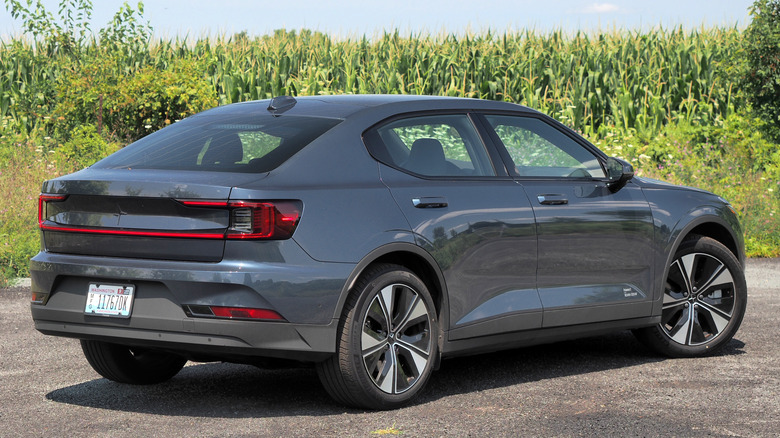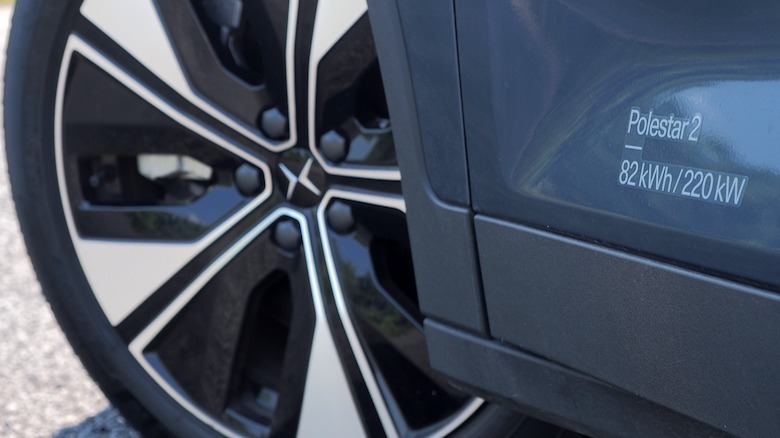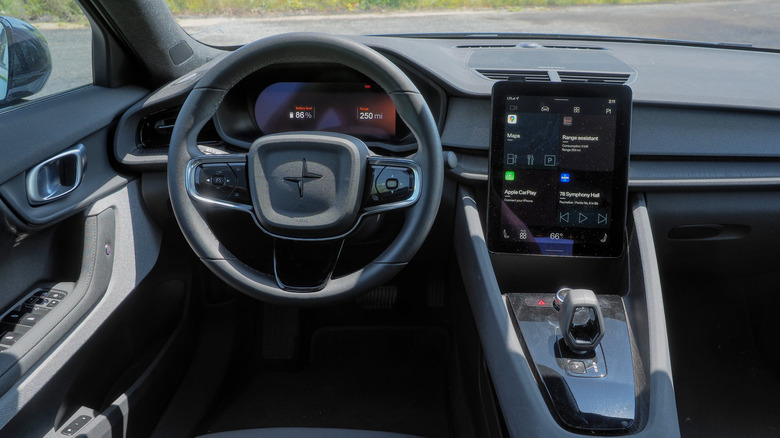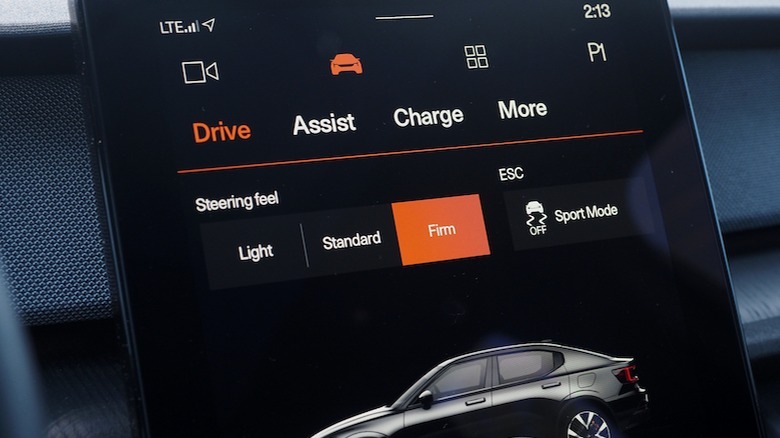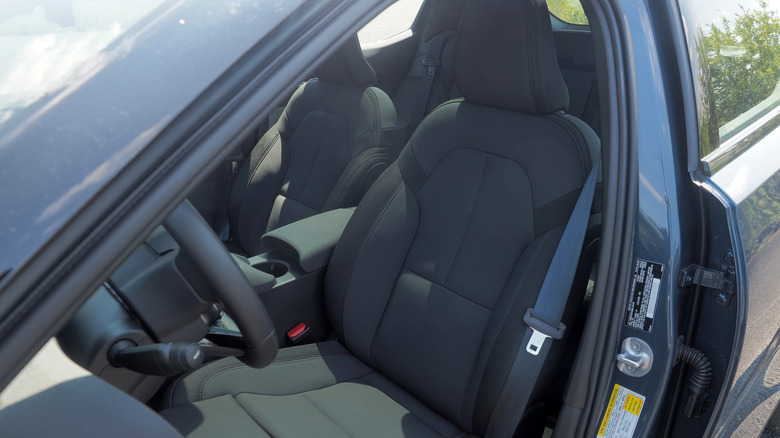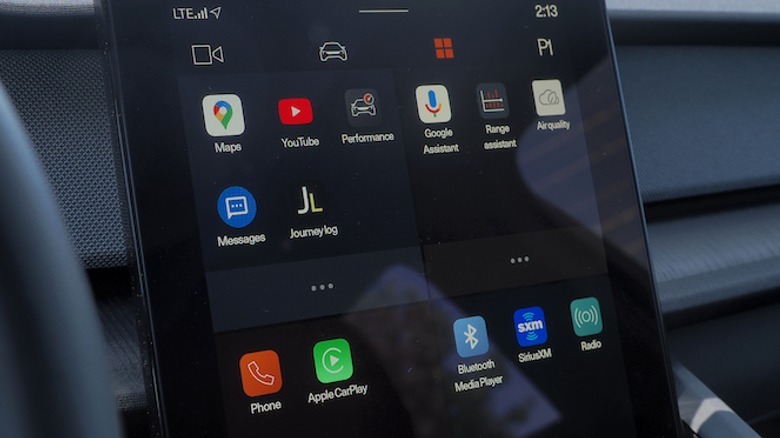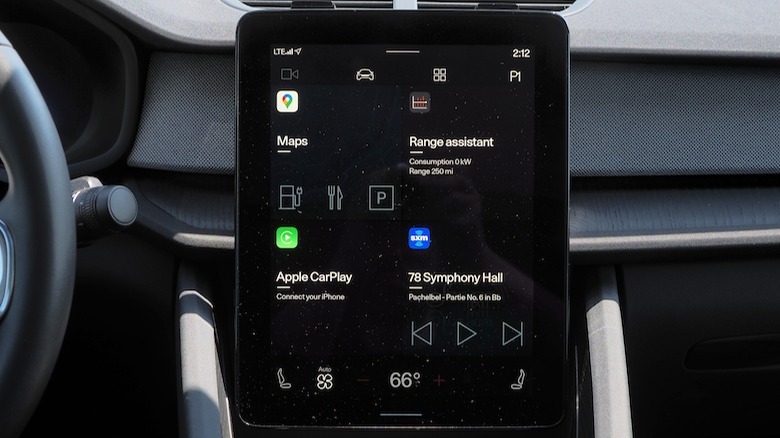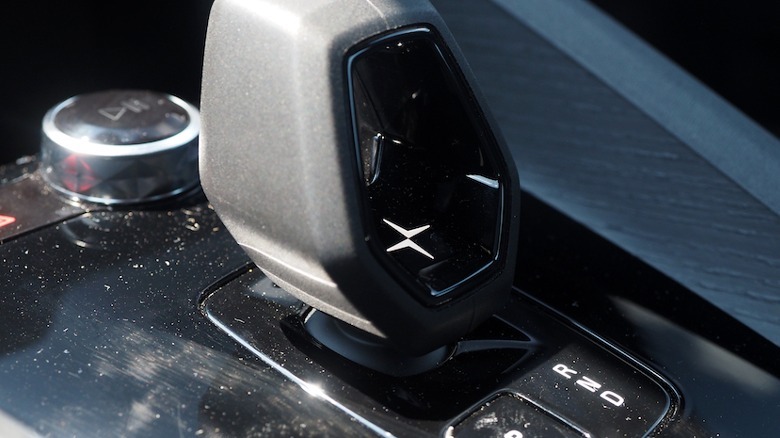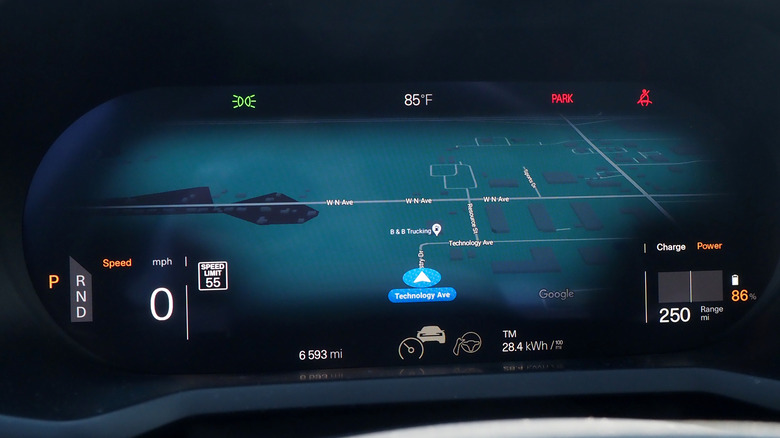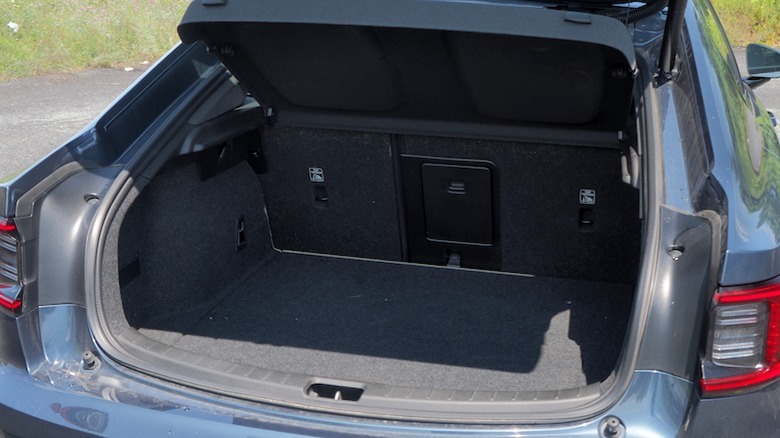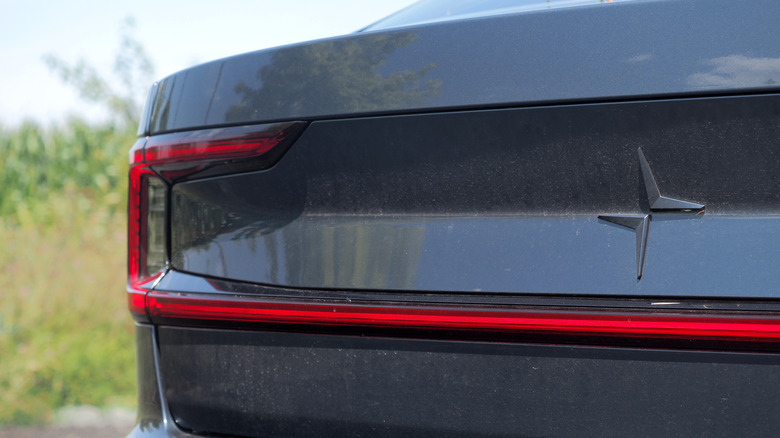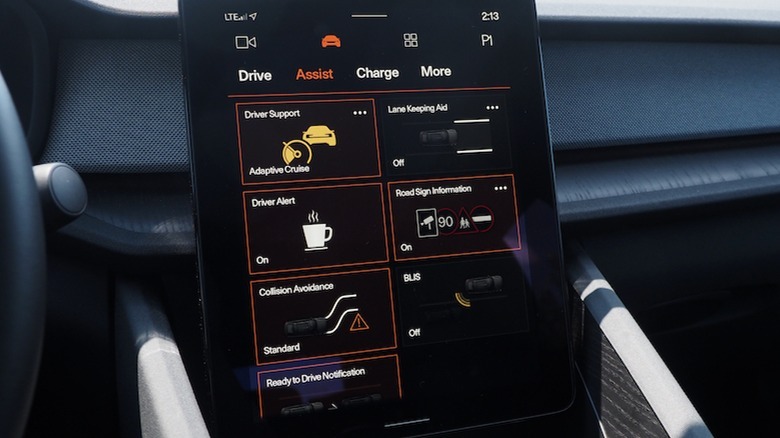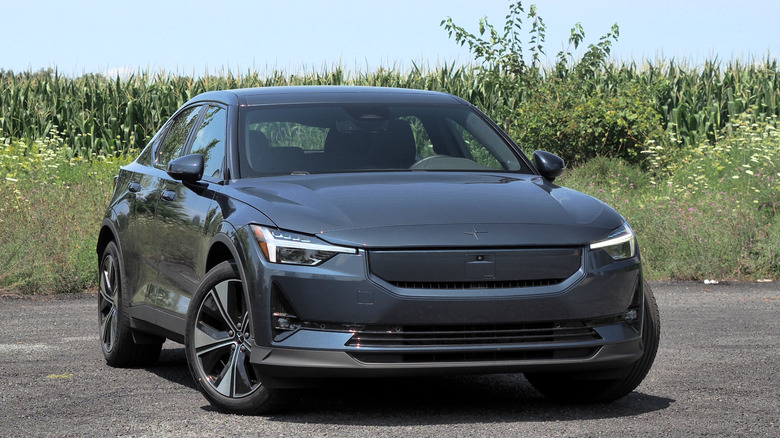2024 Polestar 2 Single Motor Review: More Range And Power Help Justify The Price
- More power and RWD increases fun
- Improved range
- Faster charging than Dual Motor version
- Fresh interior design with plenty of tech
- Design might be too subtle for some
- Still not inexpensive
You certainly can't accuse Polestar of shouting. Subtle doesn't really begin to describe the Polestar 2, an EV seemingly tailor-made to provoke "what car is that?" questions whenever you park. That shortage of brand recognition will be addressed, the automaker hopes, by the Polestar 3 and Polestar 4 wading into the competitive electric luxury SUV/crossover category.
In the process, it liberates this 2024 Polestar 2 Single Motor to focus on its primary purpose: being a gateway to a broader range, rather than representing the totality of Polestar's ethos. Priced from just shy of $50K (before destination and options), it not only helps shift the EV into a more mainstream segment, but introduces a reworked drivetrain that should improve both dynamics and range.
From the outside, you'll either appreciate the Polestar 2's light touch refresh, or just overlook it altogether. The old geometric grille-insert is replaced by a flat panel — dubbed the SmartZone — that accommodates various sensors. Other than that, this is the same relatively nondescript hatchback, complete with Polestar's fairly dour selection of paint colors.
Same name, new drivetrain
Polestar has offered a single-motor version of the Polestar 2 since the 2022 model year; a compromise on power, but leaving the EV more affordable and capable of driving further on a full charge. Come the 2024 Polestar 2 Single Motor, though — the name may have been kept, but the underlying hardware saw a big change. Instead of being front-wheel drive, the EV's single electric motor was moved to the rear.
There's a reason that driving enthusiasts value rear-wheel drive cars over front-wheel drive — often on the assumption that splitting up power and steering duties makes more dynamic sense — but Polestar also took the opportunity to bump up the power. The 2024 Polestar 2 Single Motor pushed power from 231 to 299 horsepower, while torque rose from 243 to 361 lb-ft.
That would be sufficient, the automaker said, to trim the 7.0 second 0-60 mph time of the old car to just 5.9 seconds in the 2024 model. Some way, certainly, from the 4.3 second 0-60 mph time of the 2024 Polestar 2 Dual Motor (which also got a power bump), but undoubtedly impressive nonetheless.
More fun on the road
On the road, that greater sense of urgency leaves the Polestar 2 Single Motor feeling markedly more perky than its predecessor. Not melt-your-face-off fast in the way that some EVs still shock under acceleration, but eager and spritely as befits something with a $55K+ price tag. Speed fans will certainly want to look to the Dual Motor version, which is much more aggressive — whether pulling away from a stop light, or when taking advantage of a gap for passing on the highway.
Either way, power delivery is smooth and easily modulated, with even Polestar's maximum regen level avoiding jerkiness. You can readily bring the EV to a clean stop without so much as grazing the brake pedal, while pickup lacks the lumpiness that some electric vehicles still demonstrate at very low speeds. The steering feels soft in both its Light and Standard settings; Firm doesn't really add greater feedback from the road, but does at least lend more confidence when you're hustling.
Though it's on the heavy side, like all EVs, the Polestar 2's lower fastback design, unlike the more-commonplace electric crossovers, leaves it unexpectedly fun in backroads. No, not BST Edition 270 levels of joy, but a neat blend of point-and-squirt power and grip with minimal body roll. The downside there is that a relatively stiff suspension tune can make ill-kempt asphalt more noticeable in the cabin.
An upscale and minimalist cabin
Inside that cabin, Polestar blends hints of Volvo with general minimalism. A fully-digital 12.3-inch driver's display shows maps, navigation instructions, and key information like speed and range. In the center, a portrait-aspect 11.2-inch touchscreen runs Android Automotive OS, with a straightforward UI navigated by tabs and generally chunky iconography.
As well as Google Maps, the Google Assistant for "Hey Google" voice control, and access to the Google Play store (for the still-relatively-limited selection of auto-approved third-party apps), there's native software for services like YouTube, Spotify, and the Vivaldi browser, which can tap the EV's baked-in 4G LTE modem.
Apple CarPlay is also supported — though not Android Auto — and for the most part, complete with a dedicated volume knob, things are easy to control. A simple vehicle settings menu has options for three levels of steering heft; turning one-pedal drive to off/low/standard; toggling "creep" on or off, for when the Polestar is at a standstill; and activating Sport Mode (which is actually just turning off the ESC). Where rival EVs are relegating things like light, wiper, and even park/drive/reverse control to touchscreens, the Polestar 2 has traditional stalks and a cute little transmission shifter reminiscent of La Grand Arche in Paris.
A 15W wireless charging pad is in the front, with four USB-ports equally split between the front and rear. Dual-zone climate control and heated front seats are also standard.
More standard equipment
Previously, safety features like blind spot warnings were a cost-option. Polestar has reversed this miserly decision, making them standard along with collision avoidance mitigation, oncoming lane mitigation, rear collision warnings and mitigation, cross-traffic alerts with auto-braking, post-impact braking, and lane departure warnings, plus lane-keeping assistance. The $2,000 Pilot Pack adds adaptive cruise control and Pilot Assist — Polestar's hands-on highway assistance system — along with rear collision warning and mitigation, and LED front fog lights with cornering.
I'd probably save my money there — blind-spot warnings were the main reason to go for the old Pilot Pack — and spend $2,200 on the Plus Pack instead. That includes the panoramic glass roof (UV filtering, though sadly still without a physical shade), a 600W audio system upgrade to the standard 250W version, fully-electric adjustable front seats, a heated steering wheel and rear seats, and a gesture-operated power tailgate (the reasonable 14.4 cubic-feet trunk expands to 38.7 cubic-feet with the split rear bench folded; there's a 1.2 cubic-feet frunk under the hood), among other niceties.
Leather upholstery — which also adds ventilation to the front seats — is $4,000, and requires the Plus pack, too. A $1,300 retractable tow bar hitch taps the EV's 2,000 pound towing capacity. While Polestar does have a Performance Pack ($5,500) which unlocks more power, changes the suspension tuning, and makes other tweaks, it's only available on the Dual Motor version.
Range improvements are key
Range also gets a bump for the 2024 model year. As expected, the single-motor configuration remains the range king: According to the EPA, on 19-inch wheels, the 2024 Polestar 2 Single Motor will drive up to 320 miles, while the 20-inch wheel package sees that dip to a still-respectable 307 miles. The previous, front-wheel drive Polestar 2 Single Motor was rated for 270 miles.
In my own, mixed driving — perhaps a little more enthusiastic than many might be day-to-day — the Polestar 2 Single Motor on 19-inch wheels landed at around 3.7 miles per kWh, or 27 kWh per 100 miles (slightly under the EPA's 29 kWh per 100 miles figure).
It leaves the entry-level Polestar 2 more competitive with rivals, even if it's still more expensive than many of them. A Tesla Model Y Long Range Rear-Wheel Drive ($44,990) is rated for an estimated 320 miles; Hyundai's Ioniq 5 SE ($45,850) comes in at 303 miles in RWD form. I'd argue neither is as nice inside as the Polestar. A 2025 BMW i4 eDrive40, meanwhile, starts at $57,900, and will manage up to 318 miles configuration-depending, the automaker says.
The Polestar 2 Single Motor actually has a larger battery than the Dual Motor version — 82 kWh gross, versus 78 kWh — and it charges more swiftly at public DC fast chargers, supporting up to 205 kW versus 155 kW. That means a 10-80% charge could take 28 minutes (six minutes faster) via the CCS port. Polestar expects to switch to NACS in 2025, but has promised adapters to use select Tesla Supercharger locations sometime this year.
2024 Polestar 2 Single Motor Verdict
For a while, when it was the only model in Polestar's lineup (the engaging but eccentric Polestar 1 was a high-priced novelty, and limited production of which ceased in 2022), the electric fastback felt somewhat nebulous. Similar to Volvo's EV lineup, yet with Polestar's insistence that the two were very different, it was forced to carry the full weight of the automaker's entire strategy on its relatively surreptitious shoulders.
With the arrival of the Polestar 3 and Polestar 4, though, the Polestar 2 gets some more breathing room. No longer representing the totality of the automaker's strategy, it's liberated to do what it arguably does best: Combine understated luxury with solid electric performance in a car that doesn't feel like it's shouting about being an EV.
Even after its light-handed design refresh, the Polestar 2 is more subtle than many of its electric brethren. Neither visually outlandish for its own sake — like an EV6 or Ioniq 5 — nor ostentatious luxury as you might accuse an i4 or Audi Q4 e-tron. Free, too, of toxic brand associations that now leave Tesla so contentious. That quiet might once have damned it to sidekick status, but with the growing confidence of the automaker's range, and a more enthusiastic experience from behind the wheel, the 2024 Polestar 2 Single Motor feels more than ready for the spotlight.
